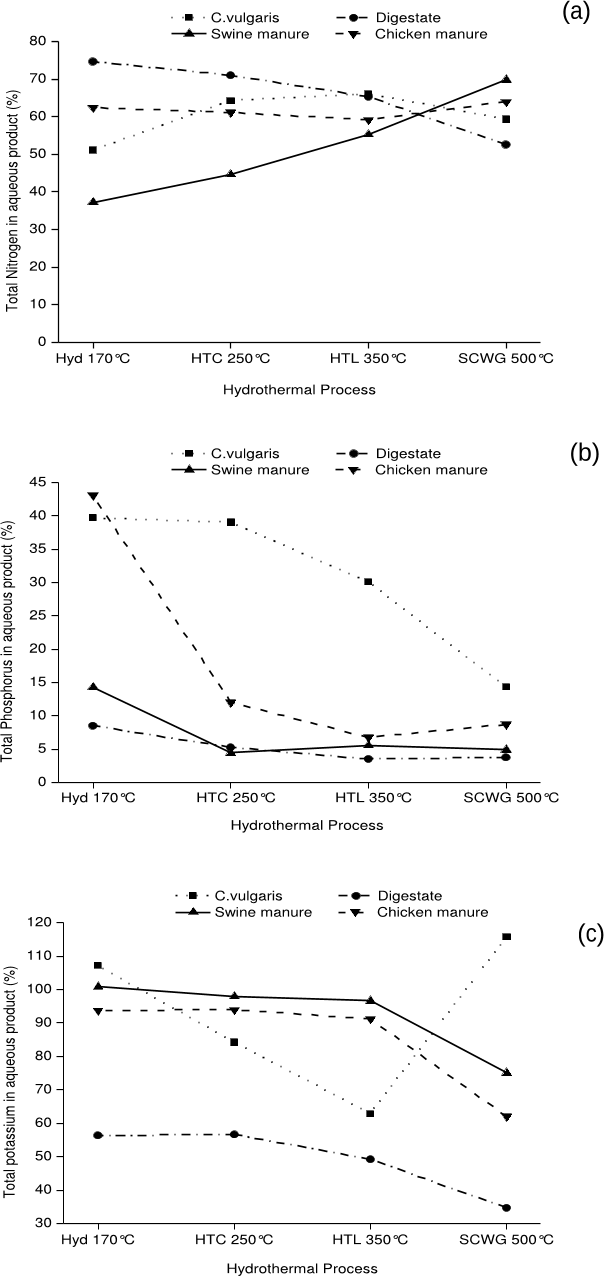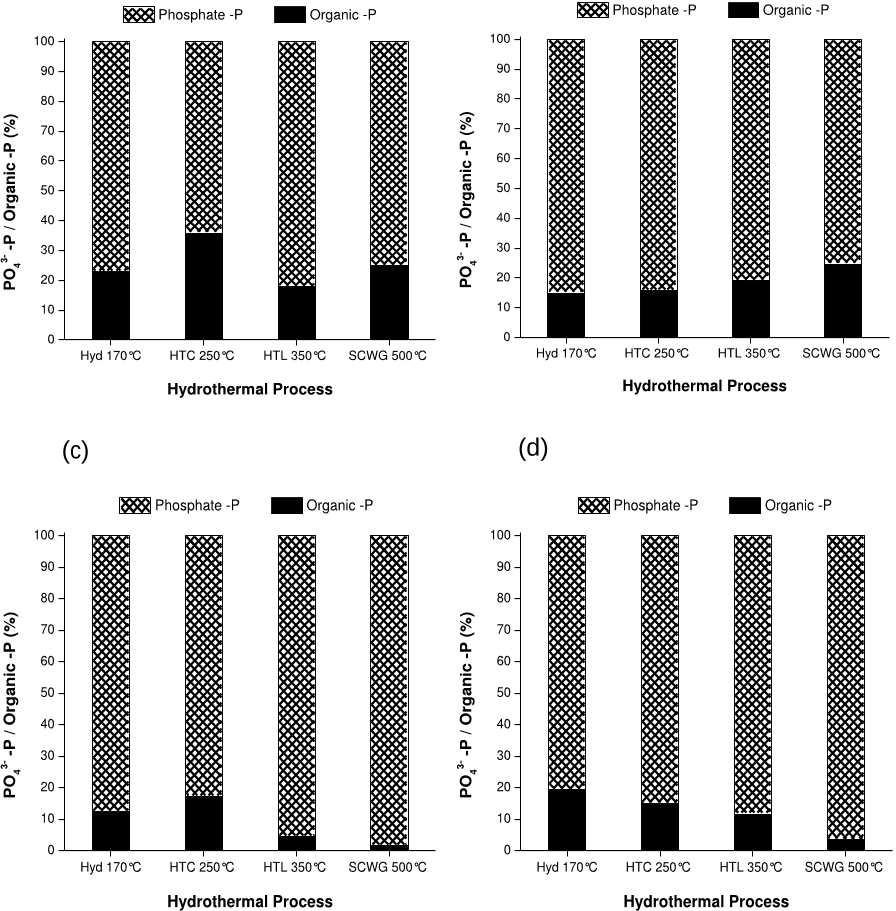Abstract: Willows are increasingly used as natural filters to treat nutrient-rich wastewater. Their natural tendency to absorb minerals is exploited both for the nutrients and the metals, which are contained in the wastewater. This application allows addressing environmental concerns related to wastewater management and, at the same time, achieving higher biomass yields. However, the end-use of this biomass is often a simple incineration for production of heat and power. The present study proposes, alternatively, to use willow biomass, grown on wastewater irrigated fields, as feedstock for the hydrothermal liquefaction process. The thermochemical conversion route allows the valorization of the organic fraction of the biomass into a biocrude oil, and simultaneously collecting and preserving the inorganic elements in the effluent products. The willow was converted at supercritical water conditions (400 °C) for 15 min in a micro-batch reactor (10 cm 3 ), and high mass yields (39.7%) of energy dense (38.6 MJ kg −1 ) biocrude oil were obtained. It was found that most inorganics, including phosphorus (76% of total P on a mass basis), are mainly transferred to the solid products. The concentration of the elements in the solids eases their recovery and re-use for soil amendment. A different tendency was observed for potassium and sodium, which were almost exclusively collected in the aqueous phase (above 88% for both K and Na on a mass basis). Significant quantities of nitrogen and sulfur, and some metals, were transferred to the biocrude oil, however its quality resulted overall unaffected.








